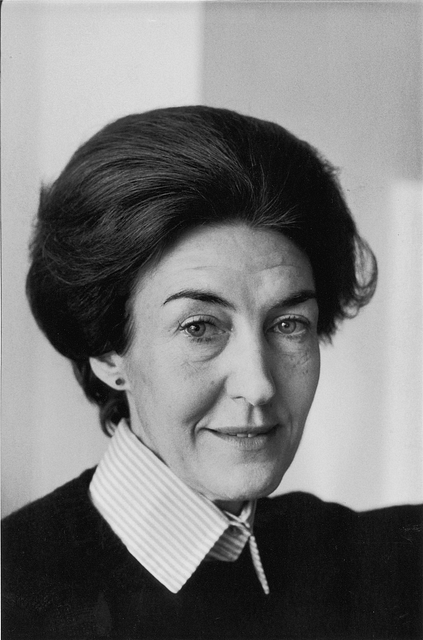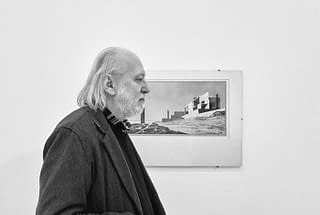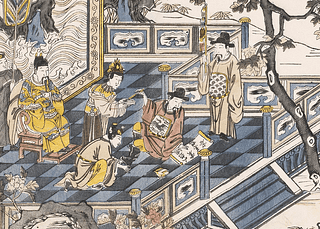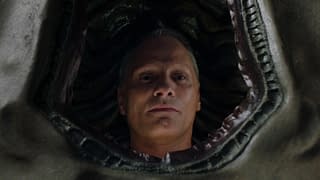
Shirley Hazzard: A Writing Life
Brigitta Olubas
FSG, 576 pp.
In February of 2014 I arrived at an apartment building on Manhattan’s Upper East Side, to interview for a position as an ‘Editorial and Personal Assistant’ listed on Craigslist. I had moved to New York the year before, and I needed work. The job listing had not specified who I would be assisting, but it was clear to me once I entered the lavish, overly gilded apartment, that it was somebody very grand. The woman who led me into a sitting room told me that the man in question was Ved Mehta, a writer I had never, at that point, heard of before. Mehta, who became blind at an early age after a bout of meningitis, entered the room with some ceremony ten minutes later, and commenced a discussion of the position. He asked to hold my hand – he said it helped him connect with people – and explained that he was looking for “an amanuensis.” I would take dictation, assist with his manuscripts, that sort of thing. He said there was a great tradition of young literary women working as amanuenses to distinguished male writers, and, detecting my accent, he said I must know of the finest female writer with whom I shared citizenship. His great friend Shirley Hazzard had been an amanuensis in her youth, he said. It would be a fine thing to do, as an Australian woman living in New York, with literary aspirations, to model myself after Shirley Hazzard.
I did not end up becoming Mehta’s amanuensis, and soon afterwards I got a job at McNally Jackson Books, where I would work for six years. Hazzard passed away in 2016, and whether it was related or not, 2016 was the year I noticed an uptick of interest in her work. Adoration spread by word of mouth and New Yorkers —often young women — arrived looking for The Transit of Venus, her 1980 novel of two orphaned sisters leaving Sydney to live an attenuated melodrama in mid-century England and New York. The book was easy to find, as I had put it on prominent display as a staff pick. Not long after I started working at the bookstore, with Mehta’s comment still percolating in my mind, I had reread the novel myself. I had first read Hazzard’s most famous novel when I was in university, but it hadn’t made much of an impression. It was only on returning to it, after Mehta’s comments, that I was startled by the beauty and subtlety of her prose, the depth of her subject matter, and the delicacy of her sensibility.
That people fall in love with the writing of Shirley Hazzard only on the second read has been so oft repeated that it’s tantamount to cliché. Geoff Dyer wrote for The New Statesman in 2004 of returning to Hazzard twenty-three years after his first reading, and finding in her work the feeling that he had been “destined to read the book at this moment.” Michelle de Kretser wrote in her 2019 book, On Shirley Hazzard, of returning to Transit as having felt “like a blow to the breastbone.” Hazzard’s husband, Francis Steegmuller, commented, “No one should have to read it for the first time.” When I reread Transit, I was just beginning to write my first novel, and because I often felt adrift and afraid, I looked for other writers who could instruct me in who I was. This, in its own way, was an extension of Mehta’s model of the amanuensis: apprenticing until you can stand on your own two feet. I apprenticed myself to Annie Ernaux, W.G. Sebald, Anne Carson, and, yes, Shirley Hazzard.
Shirley Hazzard grew up in Mosman — at present, the sixth wealthiest postcode in Australia — in a house with views of Middle Harbor. This part of Sydney is stunning in its beauty, a suburb of bushland cliffs and secluded shark-netted beaches, of camellias and Moreton Bay Figs, of yacht clubs and Arcadian cricket pitches and her writing is shot through with an abiding sensory longing for the city. Hazzard’s Australian origins animate much of Brigitta Olubas’s forthcoming biography, Shirley Hazzard: A Writing Life. Olubas is head of English and Creative Writing at the University of New South Wales, and her work has focused on Australian literature and modernity. She has previously published scholarly collections on the work of other Australian 20th century writers, including Elizabeth Harrower and Antigone Kefala.
Perhaps it is for this reason that when Olubas writes about Hazzard’s relationship to Australia, the biography comes to life, even though Hazzard spent little of her life in the country. Olubas frames Hazzard as a product of a particular place in time: an insular Australia shaped by the legacies of colonialism and racism. Although Hazzard was vocal in her criticisms of Australia as she gained louder and wider acclaim, she was, Olubas writes, “unwilling to saddle herself with its colonial burden.”
Shirley Hazzard was born in Sydney in 1931, but she left Australia for good in 1947, following her diplomat father to postings in Hong Kong, Wellington, and then New York. There, she applied for a job in the Technical Assistance Administration at the United Nations. Hazzard began moving in the kinds of circles that can make New York so seductive. She met W.H. Auden at a dinner party, and editor and cultural critic Dwight Macdonald while on holiday in Tuscany. In 1960 he offered to take one of her short stories to The New Yorker, circumventing the slush pile and getting it directly into the hands of the fiction editor, William Maxwell. Maxwell signed Hazzard to a first reading agreement in 1961, an arrangement that included cost-of-living payments and accrued bonuses, making her so financially stable she was able to leave the U.N. and write full-time (long gone are the days, etc.). She married the biographer Francis Steegmuller and lived with him in a stylish modernist apartment complex on East 66th Street. They moved in the storied intellectual circles of mid-century New York life: the Columbia crowd, the New Yorker crowd, the Partisan Review and Commentary crowd, ‘the Maxwells’ and ‘the Macdonalds’, Ved Mehta, Albert Kazin, Lillian Hellman, James Merrill, Robert Penn Warren, Paula Fox, conservators and curators at the Whitney and the Frick, and more. She wrote four novels, two collections of short stories, and several works of non-fiction, and won both the National Book Award and the Miles Franklin Award for her last novel, The Great Fire.
While Olubas’s biography does an excellent job of narrating Hazzard’s early life in Australia and her nascent career at the U.N. (both in New York, and in Italy), after Hazzard rises to prominence the biography begins to slow. The reader becomes lost in lists and anecdotes: who Hazzard met, what she ate, what sights she saw, and where she took her coffee. There’s an endless inventorying of notable people Hazzard encountered at dinner parties, with rarely any substantive detail about what they talked about, nor how those meetings might have contributed and influenced Hazzard’s “writing life,” which the biography claims to take as its subject. At times these sections feel gossipy, while at others, it feels as if the author might have been overwhelmed by the amount of archival material. Yet these are sections the regular reader can easily skim without losing the biography’s thread. A scholar of Hazzard’s work may find this information useful, and no criticism can be made of the book in that regard — it is certainly comprehensive. But ideally, a biography forms a self-aware narrative around the life of its subject, a narrative that can draw out the themes and complexities of a life beyond the chronology and happenstance of its days. When the narrative faltered, I admit to having found the book so wearisome that I put it down and couldn’t return to it until reminding myself that the deadline for this review was looming.
There are interesting and illuminating sections, however, particularly those that deal with Hazzard’s relationships with other writers, and how those relationships influenced her own work. Hazzard’s close friendship with Muriel Spark was formative early in her career — Olubas writes that “they called each other Shirlers and Mu.” This friendship led directly to Hazzard meeting her husband, but also serves as an important window into Hazzard’s practice. The two-hour long phone calls Spark and Hazzard regularly conducted of a morning were an important part of both women’s days, but left Hazzard drained and unable to work, whereas the calls fed Spark’s work like gasoline. The two, inevitably, fell out.
Hazzard would also fall out with another close friend, the novelist Elizabeth Harrower. The friendship was conducted mostly by correspondence, as Hazzard returned to Australia only five times after 1947. But through Harrower, Hazzard was introduced to contemporary Australian letters and politics, meeting and becoming close to Patrick White, David Malouf, and Murray Bail. Hazzard’s mother was living in Sydney in the 1970s, in increasingly poor physical and mental health, and it became Elizabeth Harrower who was burdened with Hazzard’s mother’s care. Harrower arranged her application for a government pension, took her to medical appointments, and would eventually be asked to move her to a nursing home and clean out her apartment. Hazzard, with her international reputation, would write to Harrower back in Sydney, imploring her to focus on her newest novel in one breath, and then begging for help for her mother in the next. These requests were often written from Capri, where Hazzard and her husband spent every spring and autumn, writing in peace before returning to Manhattan in the summer. The gross imposition Hazzard made on Harrower over a period of decades is startling, and the break in their friendship — coming at the height of Hazzard’s fame, and the moment when Harrower had ceased publishing — seems natural. Hazzard’s inability to discern her own financial, geographical, and social privilege appears as symptomatic of broader themes in her life, and the fact that Olubas doesn’t spend more time drawing out those connections seems like something of a missed opportunity. It also casts the respective writers’ enduring legacies in a depressing light: despite a reissue of her work in 2014, Harrower’s novels never sold as well as Hazzard’s at the bookstore, no matter how hard I tried to sell them.
Through Harrower, Hazzard came to know more of Australian life, and championed Australian writers in the pages of American publications. Her renewed contact with Australia also encouraged her to comment publicly on the country, critiquing its culture of nationalism, its treatment of Indigenous Australians, its misogyny, and its prejudice, both on the world stage and in Australia itself. This went over badly in Australia, and responses to Hazzard’s aired opinions were frequently bullying and chauvinistic: the highly-regarded literary journal Meanjin derided Transit as “the best-dressed women’s magazine fiction of the year;” John Docker wrote in The Australian Book Review of “manhandling” her memoir Greene on Capri and scrawling swear words in its margins; and Don Anderson characterized her 1984 Boyer Lectures as “a speech-day address by the headmistress of a girls’ private school, of, dare I say, Queenwood” (Hazzard’s actual former school). Olubas describes Hazzard lying awake at night in 1984, consumed by the viciousness of the attacks, writing in her diary “what hatred; and self-hatred…what hatred in that paradoxical Australia.” Hazzard, who had not lived in Australia since the 1940s, failed to see that the country of her childhood had changed and become much different by the 1980s, which comes as surprising, given how sharply she saw so much else in the world.
I find that in my copy of The Transit of Venus, which I last read seven years ago, I have underlined “Australia required apologies.” I have also written the word ‘yes’ next to the following sentence: “There was nothing mythic at Sydney: momentous objects, beings, and events all occurred abroad or in the elsewhere of books.” That, more than anything else, sums up how I felt as a teenager: real life happened somewhere else. And if there were poets and painters, they were in Europe, America, Japan, Argentina, maybe Melbourne — but certainly not in Sydney. “Shirley’s sense of literature,” writes Olubas, was “understood as something produced elsewhere, and endorsed through the same colonial rubrics that had defined and limited the world for her from the beginning.” There are descriptions and perspectives of Australia in Hazzard’s books I now find uncomfortable, and no longer recognize as my own. Whereas I may once have appreciated and even agreed with some of Hazzard’s contempt, I return to those underlinings now, after reading Olubas’s biography, and find that their view is of a “primitive” place, somewhere hopeless, worthy only of abandoning. For Hazzard, Australia was “in perpetual, flagrant violation of reality”, and she carried with her “the burden of a slatternly continent.” This has been the most confronting effect of reading Olubas’s biography: while I still admire Hazzard’s work, I can no longer look at the worldview she evinces when she describes Australia and write ‘yes’ in the margins.
I began this review with a piece of advice I was given: that it would be a fine thing to do, to model myself after Shirley Hazzard. I am not sure to whom Ved Mehta thought Hazzard was an ‘amanuensis’ — I do hope it wasn’t her husband he had in mind — but there is no evidence in Olubas’s biography that Hazzard apprenticed to any older writer, or that she ever stood on the shoulders of anything but luck, privilege, and a routine of constant, steady work. I began with my memory of that encounter because it has troubled me for so long. To model oneself after Shirley Hazzard is to buy into the idea that “a writing life” can be stepped into like your grandmother’s old dress, as though conditions and ideas and dress-sizing were all static, and still the same. But it’s also to undervalue the actual writing itself. When it is the right time, the work of Shirley Hazzard has a way of striking the reader like a thunderbolt. Hazzard herself knew that this was the real enchantment of literature, and the reason so many of us still give our lives over to it, because the act of reading is “in part an act of submission, akin to generosity or love.” I can only hope that more readers now find their way, or way back, to Hazzard’s work, and find, as I have, a sharper and more expansive version of themselves reflected from her pages.


